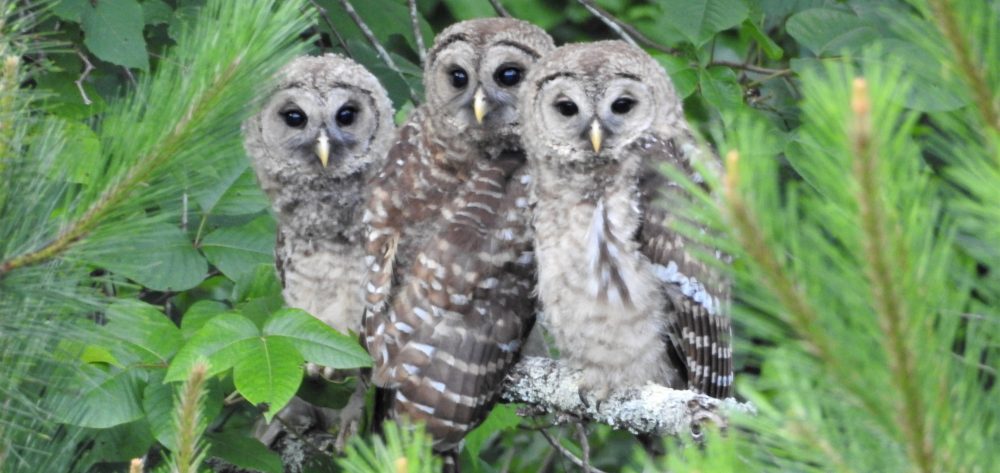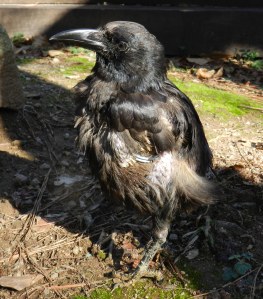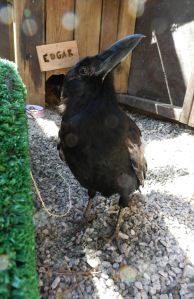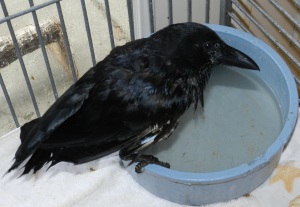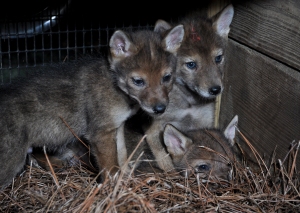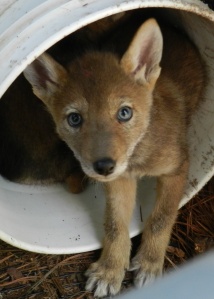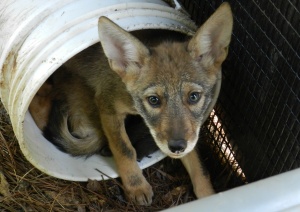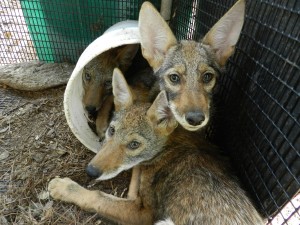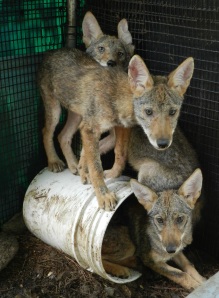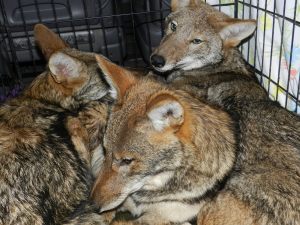I have a thing for crows. Whenever I hear their calls, I can’t help but smile to myself and wonder what they are saying. Most people take them for granted, perhaps because they’re so common, yet few people truly understand how remarkable they really are. Highly intelligent and adaptable, crows aren’t appreciated enough. Until I met one very special crow, I, too, never gave them much thought. When she passed away this summer, I was genuinely heartbroken, and I miss her still. She was a good friend.
You may find it odd that her name was Edgar Allan (Crow). When she came in to the wildlife center where I volunteer (AWARE) for rehabilitation in 2010, we had no way of knowing her gender without performing costly blood work, so we made the best guess based on her weight. (Males tend to outweigh females, but they otherwise look the same.) Later, dedicated volunteers donated the funds for the lab work for each of our educational birds, but Edgar’s name had already stuck. Truly, for a singular bird, she deserved a singular name. I was privileged to develop a relationship with her over the course of three years.
Malnourished and missing many of her feathers, Edgar was a pitiful sight when she arrived at AWARE. The feathers she still had were brittle and broken, some of them raw where they had broken off. Although the cause of Edgar’s condition was uncertain, we suspected it was a result of a “fast-food diet.” More than likely, Edgar was raised in an urban area, brought up on discarded human foods like French fries and hamburgers rather than a natural crow diet. Unfortunately, as a result of her poor nutrition as a youngster, her feathers hadn’t grown properly, and she wasn’t able to fly. With care and good nutrition, many of Edgar’s feathers grew in long and sleek over time, but unfortunately, never fully enough to set her aloft.
What she lacked in grace and appearance, Edgar made up for with her spunky personality. She was a very vocal bird, having several different calls with different meanings. (Crows can produce at least 25 different sounds and even mimic the sounds of humans and other animals.) Whenever I arrived at the center or she wanted my attention, she would call to me with exuberant caw-caw-cawing. When she was upset or frightened (brooms totally freaked her out), she would elicit a gruffer, earsplitting CAW-CAW-CAW, but she cooed softly when you stroked her sweet spots. When she was being playful, she giggled. No joke – giggled! Once or twice, volunteers even swear they heard her say a word or two.
Edgar could be mischievous and silly, and she often made people laugh. She loved to play “catch-me-if-you-can,” peck at people’s shoes, and walk around in her food getting her feet dirty. (Fortunately, she also liked to take baths frequently). She loved to play with paper – crumpling it, pecking at it, wetting it, and stuffing it in cracks and crevices. She liked to play with my scarves in the winter, too, so I made her a few of her own to play with. I would tease her by trying to put one on her. A few times, she let me! In the few months before she died, Edgar and I had perfected a really cute trick. I’d tell her to “kiss my beak,” and she would rub her beak against my nose. Someone once commented that I was brave to put my face so close to a crow’s strong, pointy beak, but Edgar and I had established mutual trust.
Because of Edgar, crows fascinate me. In my curiosity to know more, I’ve done a lot of reading about them. I wasn’t at all surprised to learn that crows are among the smartest of all animals, but I’ve learned some amazing facts that you may find surprising:
- Crows form lasting, close-knit family ties. In fact, it is not uncommon for three generations of crows to spend time together. Crows care for young, sick, and injured family members and protect them from predators. They even form “mobs” to drive predators away. Crows form monogamous breeding pairs and are known to pay extended visits to siblings or extended family living elsewhere. Young crows may spend several years with their parents, helping to raise subsequent broods, and juveniles often set up their own breeding territories adjacent to their parents’.
- Crows are one of the few species of animals that makes and uses tools, and they are excellent problem solvers. They have been seen dropping acorns onto roads to be cracked by passing cars and dropping shellfish onto rocks to break them open. They have also been observed breaking off twigs of a certain shape to use as a hook for snagging insects in tree cavities. They even store these “tools” in safe places to use again and again. In addition, crows have also been known to drop pine cones on people getting too close to their nest. Sometimes, crows pull up unattended fishing lines and eat the bait or fish they find, which requires both problem solving ability and dexterity. They have also been known to tweak the tail of another animal to distract it while a fellow bird steals the animal’s food.
- Crows are playful and curious. They drop and catch sticks in flight and play games like tug-of-war. They swing on tree branches and slide on snowdrifts. Sometimes, they’ll give a playful nip to the tail of a dog or other animal, then fly out of reach.
- Crows benefit the environment. They eat insects and small animals that harm crops and gardens, as well as food littered by humans. They also eat carrion, helping sanitize the environment. Crow droppings spread seeds and fertilize soil.
If you still aren’t convinced that crows are amazing, or if you want to learn more about these incredible birds, check out the extraordinary story of Moses, a crow who “adopted” a kitten. You’ve got to see it to believe it: https://www.youtube.com/watch?v=1JiJzqXxgxo! In addition, the following fascinating study shows that crows can learn not only to recognize individual human faces and identify them as friend or foe, but will transmit this information to their crow mates: http://news.sciencemag.org/2010/02/caveman-or-dick-cheney-crows-know-difference! Ironically, as Cornell Lab of Ornithology ecologist and crow expert Kevin McGowan notes, whereas “crows can recognize people as individuals, we still see crows as just crows.”
Edgar Allan Crow gave me a gift by showing me how remarkable crows really are. Once you know more about them, it’s hard to think of them as “just crows” and not appreciate their intelligence, loyalty, and moxie. Pay attention to your crow neighbors who raise their families next to our own — you never know how they’ll surprise you!
